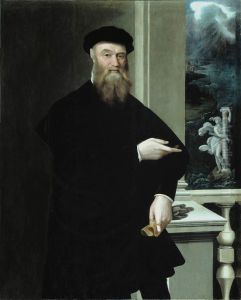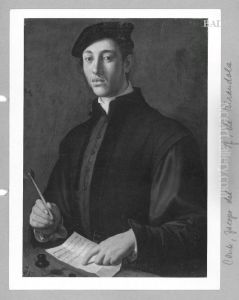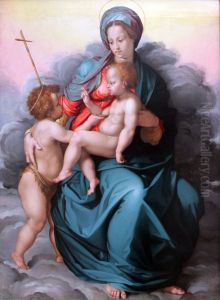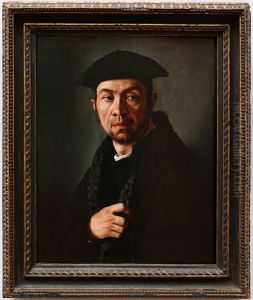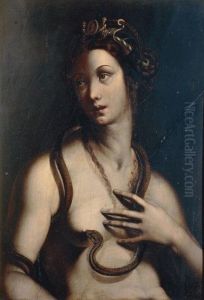Jacopino del Conte Paintings
Jacopino del Conte was an Italian Mannerist painter born in Florence in 1510. He was initially trained by Andrea del Sarto, a leading figure in the High Renaissance, whose influence is evident in Jacopino's early works. However, as his style developed, Jacopino became more closely associated with the Mannerist movement, which was characterized by its complex compositions, elongated figures, and often, a heightened emotional tone compared to the balanced and harmonious works of the High Renaissance.
After his initial training in Florence, Jacopino moved to Rome, where he spent most of his career. In Rome, he was exposed to the works of Michelangelo, Raphael, and other Renaissance masters, whose influences further shaped his artistic development. Jacopino became known for his religious paintings, portraits, and frescoes, which demonstrated his skill in using color, light, and shadow to create depth and emotion in his works. One of his most notable works is the 'Madonna with Child and Saints', which showcases his ability to blend the traditional themes of the Renaissance with the more expressive and dynamic qualities of Mannerism.
Throughout his career, Jacopino del Conte also contributed to the decoration of several churches and palaces in Rome, including work for the Oratorio del Gonfalone and the church of San Lorenzo in Damaso. Despite his contributions to the art of the period, Jacopino has not been as widely recognized as some of his contemporaries, possibly due to the overshadowing fame of other Mannerist and Renaissance artists. However, his works are still appreciated for their beauty and technical skill, and they provide valuable insights into the transitional period between the High Renaissance and Mannerism in Italian art.
Jacopino del Conte's legacy is that of a skilled painter who managed to navigate the changing artistic currents of his time, leaving behind a body of work that reflects both the end of the Renaissance's harmonious ideals and the beginning of Mannerism's more expressive and complex approach to art. He died in Rome in 1598, leaving behind a legacy that, while perhaps not as celebrated as some of his peers, remains significant in the study of 16th-century Italian art.





